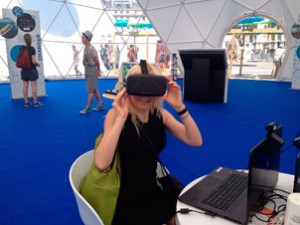 Information and communication technologies (ICT) have not only transformed the nature of information itself (i.e. the way in which information is recorded, received and transmitted) but has also brought about enormous changes in our lives.
Information and communication technologies (ICT) have not only transformed the nature of information itself (i.e. the way in which information is recorded, received and transmitted) but has also brought about enormous changes in our lives.
The ubiquitous use of computer graphics has done more than create sophisticated movie special effects; it has empowered our ability to represent computer data visually and interact with that representation.
3D artefacts and immersive environments are able to offer an experience of “being” in a virtually created space and has helped to develop innovative ways for teaching and learning. Alongside, the popularisation of digital cameras in smartphones and computer devices with the wide use of the social networking websites such as Flickr, Facebook or Instagram is increasing the proliferation of visual images in digital media. The acquisition of skills for “reading” and “writing” images are becoming increasingly important. In other words, developing Visual Literacy skills.
ICT can be used by teachers or educators not only through content (i.e. to develop visual skills) but also how they teach. Virtual Reality (VR) or Augmented Reality (AR) can be integrated by educators as visual aid tools in their lessons to enhance student comprehension of materials.
Incorporating this kind of technology in the classroom, in any curricular areas, pave the road for new ways of engaging learners, promoting knowledge building, and developing visual literacy skills. The ways of using VR/AR in this way are multifarious and limited only by the educator’s resourcefulness.
The use of 3D objects, for instance, can be used not only in subjects such as maths, to understand symbolic ways of representing ideas, but also these technologies can be used in the Arts. For example, VR environments can teach students about traditional ways of drawing, painting or sculpting. In this respect, it addresses the pedagogical streams of Arts Education identified in the Road Map for Arts Education by UNESCO, that are, the student gains knowledge in interaction with the artistic object; the student gains knowledge through his or her own artistic practice; and the student gains knowledge through research and study (of an art form, and of the relationship of art to history).
However, cost, lack of hardware, software and teacher familiarity with VR/AR and digital technologies in general may hamper widespread adoption. More access and opportunities for teacher training are needed to increase teachers’ confidence and creativity to use these technologies in their classes.

Leave a Reply